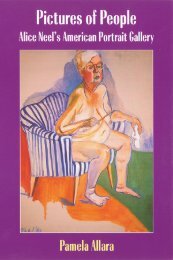Ezra Taft Benson and the State of Israel - Brandeis Institutional ...
Ezra Taft Benson and the State of Israel - Brandeis Institutional ...
Ezra Taft Benson and the State of Israel - Brandeis Institutional ...
- No tags were found...
You also want an ePaper? Increase the reach of your titles
YUMPU automatically turns print PDFs into web optimized ePapers that Google loves.
Jews.'” 46Benjamin fur<strong>the</strong>r describes that a favorite <strong>the</strong>me <strong>of</strong> <strong>the</strong> prayers among <strong>the</strong>Latter-day Saints was “<strong>the</strong> rebuilding <strong>of</strong> Jerusalem <strong>and</strong> <strong>the</strong> restoration <strong>of</strong> <strong>Israel</strong> inconnection with it.” 47While Brigham Young <strong>and</strong> o<strong>the</strong>rs made specific efforts at educating <strong>the</strong> Mormonpeople in Utah about “subjects <strong>of</strong> such deep <strong>and</strong> abiding interest to [<strong>the</strong>m] all,” much <strong>of</strong><strong>the</strong> Mormon-Jewish relationship developed more casually <strong>and</strong> locally, as Jews beganmigrating west <strong>and</strong> settling in Utah (<strong>and</strong> o<strong>the</strong>r western states), alongside Mormoncommunities. Benjamin briefly notes this in his travels, claiming that in Salt Lake City,<strong>the</strong>re are “five <strong>Israel</strong>ites here. Two <strong>of</strong> <strong>the</strong>se have become Mormons. The o<strong>the</strong>r three aremerchants <strong>and</strong> are doing very well.” 48Juanita Brooks fur<strong>the</strong>r describes some <strong>of</strong> <strong>the</strong>serelations <strong>and</strong> concludes that in Salt Lake City, <strong>the</strong> Mormon “capitol,” relations werefriendly. She reports that <strong>the</strong> 1870 visit <strong>of</strong> Rabbi Sneersohn “drew a good audience,” <strong>and</strong>explains,While individual Jews might criticize or work against <strong>the</strong> Mormons, orgenerally vote against <strong>the</strong>m, <strong>the</strong>re was never any bitterness. On <strong>the</strong> o<strong>the</strong>rh<strong>and</strong>, Mormon children heard <strong>the</strong> stories <strong>of</strong> Abraham, Isaac, <strong>and</strong> Jacob,with emphasis on Joseph who was sold into Egypt as <strong>the</strong>ir own linealancestor. . . Hebrew customs persisted as Mormon customs. . . 49Interestingly, her description illustrates that Mormon customs <strong>and</strong> teachings emphasizedJewish <strong>the</strong>mes, but, while <strong>the</strong> relationship remained “friendly,” Jews seemed far lessengaged in <strong>the</strong> welfare <strong>of</strong> <strong>the</strong>ir Mormon counterparts.Yet, <strong>the</strong> fact that <strong>the</strong> association remained friendly is remarkable <strong>and</strong> important, ina time when Jews suffered discrimination not only among <strong>the</strong>ir European neighbors, but46474849I.J. Benjamin, Three Years in America, Vol. 2, trans. Charles Reznik<strong>of</strong>f, (Philadelphia: The JewishPublication Society <strong>of</strong> America), 224.I.J. Benjamin, Three Years in America, 225.I.J. Benjamin, Three Years in America, 251.Juanita Brooks, The History <strong>of</strong> <strong>the</strong> Jews in Utah <strong>and</strong> Idaho, (Salt Lake City: Western Epics, 1973), 69.18
















